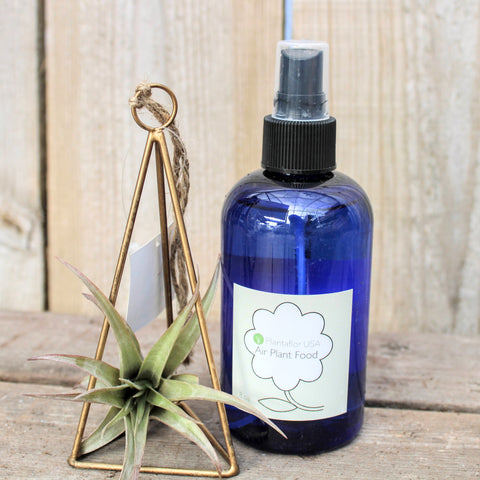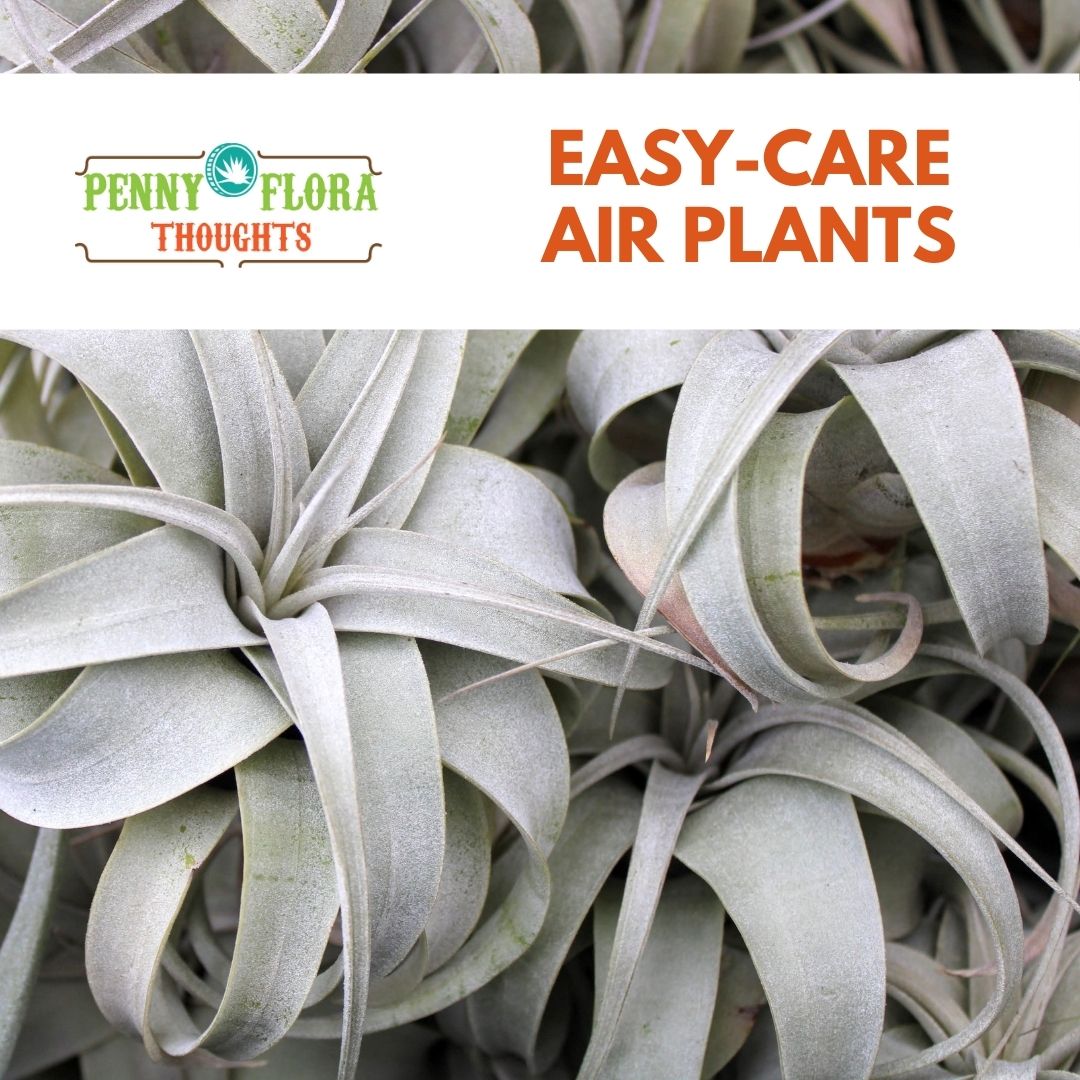“You just need to find a bright place to grow them and remember to submerge them in water once a week,” she says. “It’s that easy.”
Air plants, also known as Tillandsia, belong to a group of plants called “epiphytes” that grow on another plant but are not parasitic. They include plants like ferns, bromeliads and orchids. Air plants use aerial roots to attach to trees in their native habitats in the southern United States, Central and South America. They require no soil and gain their nutrients through their leaves.
Air Plant Care

They’re simple to grow indoors. Just find a window with bright but not hot sun. And, if the window is too hot, place the plant six feet away. Silvery varieties, like Tillandsia tectorum, reflect light and can tolerate brighter sunlight.
To water, place air plants upside down in a bowl of water for five minutes. Gently shake off excess water, then place them in bright light to dry. Use filtered water or tap water that has sat out for 24 hours for the chlorine to evaporate. Air plants take up moisture through their leaves -- not roots -- so be sure the leaves are fully submerged. The plants should be watered this way about once a week. To feed them, add a water soluble fertilizer monthly to the water or mist them with air plant food.
Air plants have an amazing adaptation. The outside of their leaves are covered with modified cells, called “trichomes,” that open up when dry to take in moisture from the air then flatten when wet to retain moisture. They also change colors in the process, going from green when wet to silver as they dry.
These plants do need good ventilation, so steer clear of sealed glass globes and terrariums. The plants also can be grown outdoors under a shade tree in warmer climates or in summer months for colder climates.
Propagation
Air plants multiply by forming small baby plants or “pups” at their base. They grow into larger clumps that eventually can be broken apart into multiple plants.
Display

Since air plants don’t require pots, they can be displayed in many clever ways. Simply lay on a windowsill or add as a live accent to a shelf or picture frame.
“I remember my grandmother had one hot-glued in a shell on a magnet on her fridge for years,” says Jared. Today, he sells hundreds at Groovy Plants Ranch. He says customers like to suspend them from geometric hangers, create arrangements on cholla wood and insert them in sea urchin shells to hang upside down like squids. If you check Pinterest for ideas, you’ll find framed chicken wire displays, wood block mounts and U-bolts in wood panels. Just remember if air plants are permanently mounted, you will need to water them twice weekly with a mister.
Air Plant Shopping

At Groovy Plants Ranch, we carry over a dozen varieties in our Air Plants Collection. They range from sea creature-looking varieties like Tillandsia butzii to rosette forms like Tillandsia xerographica. Also, check out fuzzy ones like Tillandsia tectorum ‘Ecuador’ or funky bulbous ones like Tillandsia pruinose 'Guatemala' or Tillandsia seleriana. For a flowering variety, try Tillandsia cyanea, also known as pink quill plant. We also carry plenty of Spanish Moss or Tillandsia usneoides. It’s one of the smallest air plants and grows well in a bathroom, over a kitchen sink or outdoors in warmer weather.
When buying air plants online, make sure to unpackage and thoroughly water them as soon as they arrive at your home.
Learn More
For more details on air plant varieties and their specific care needs, check out the Tilli-Cards app. And, if you’re traveling to Florida, visit Marie Selby Botanical Gardens in Sarasota to see one of the largest epiphyte collections in the country.

